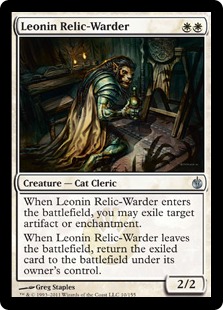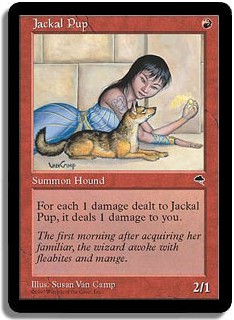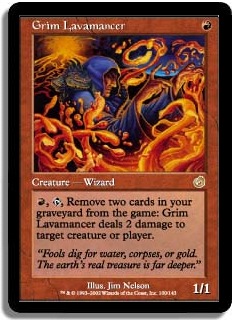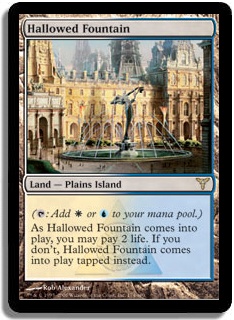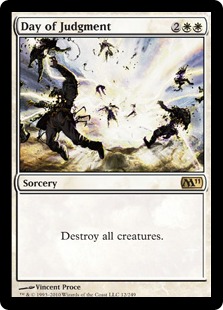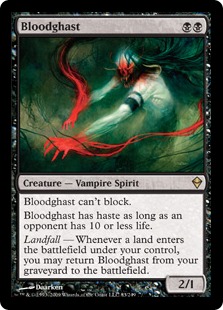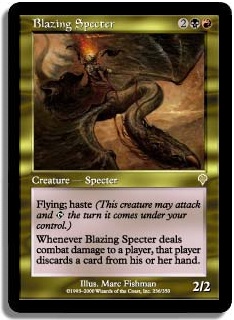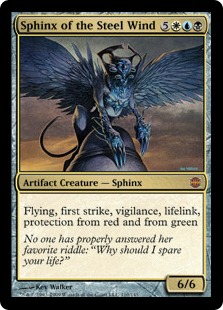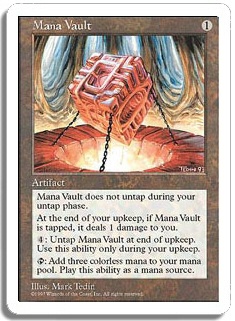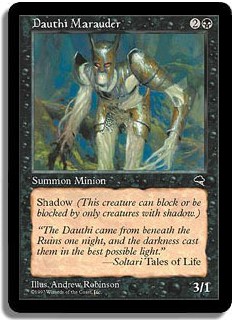This week, I’m going to talk about draft strategy in the cube. Some truths hold over from normal Limited formats. You’ll want to pay
attention to the signals you’re sending and value removal highly. You’ll pay attention to synergies in your deck, not just abstract power level.
But there are also key differences in the cube. You’re much more likely to be drafting an alternate format, so I’ll spend some time talking
about Winston drafts. The distribution of cards is different – either more or less regular – which makes signals a much trickier business.
Taking fixing is entirely different, since you encounter many more nonbasic lands than a normal draft, and they are much better.
I’m going to talk about my own take on these issues and also draw from the past few months of First Four Picks on cubedrafting.com. If you haven’t seen those, I take a
random pack from my cube and ask the readers for their first four picks (shocking!) from that pack. The comments along with the picks have given me
some insight into what other cube drafters are thinking. I’ll use that to help you understand what the other drafters at your table are thinking.
Know your enemy, if you will.
Archetypes
A few years ago, Evan Erwin wrote a series of primer-style articles on various
cube archetypes. They’re a good read and especially helpful if you’re new to cube drafting.
Of course, there are many more archetypes available. I’ll outline a few more that Evan didn’t mention—
W/R Aggro
Evan has write-ups on W/G and R/G aggro, but I think W/R aggro is just as potent. The deck meshes the efficient one – and two-drops from white
and red like Savannah Lions and Hellspark Elemental with the typical aggro package of disruption and mana denial – things like Armageddon, Strip
Mine, or Winter Orb.
Compared to R/G, this deck gives up a little in the way of quality curve-toppers – Boggart Ram-Gang and Giant Solifuge get harder to cast. But
you have more quality one-drops, since white gets the drawback-free variety and easier access to evasion. Your Mistral Charger will keep pushing damage
even after a Shadowmage Infiltrator hits the board.
W/R Control
The other side of the coin for W/R is control. This archetype is a little neglected, and I’ll readily admit that it, like all non-blue control
decks, is awful against blue control. On the other hand, this deck is excellent at handling creature decks, since red and white both offer spot removal
and sweepers. It’s also a good home for red’s high end – cards like Inferno Titan and Hellkite Charger.
The archetype is pretty playgroup dependent. If your nemesis favors permission, this isn’t the right call. But if your group just wants to turn
guys sideways, this strategy is likely to be successful. As a bonus, your key cards like Pyroclasm and Starstorm are easy to pick up, since the
aggressive decks don’t want them. Finally, there’s some synergy between white creatures and red removal. It won’t happen all the
time, but it feels pretty good to Earthquake with a Silver Knight in play or an army of Pegasi courtesy of Sacred Mesa.
Bant Venser
Okay, this archetype doesn’t actually require the namesake planeswalker… but it sure is nice.
Blink is typically a U/W strategy, but I’ve recently had more success by adding green. Green gives you access to additional life gain in the form
of Obstinate Baloth, Naturalizes, and creature card-draw like my ultimate pet card, Masked Admirers (which got a nod from Patrick Chapin in his preview
article, so go go Admirers!).
I recently had a pretty fun deck in this archetype. I had Venser, the Sojourner, along with Faith’s Fetters, Acidic Slime, Riftwing Cloudskate,
Masked Admirers, and Karmic Guide. I also had Jace, the Mind Sculptor, which pushed the deck a little beyond fun… but the core was really
card-advantage engines with a little bit of disruption to make it happen.
If you’re trying a deck like this, I’d definitely look for other blink effects as well – Flickerwisp, Glimmerpoint Stag, and
Momentary Blink all appear in a reasonable number of cubes.
U/B Tempo
There’s no question that U/B is an excellent control color, but I like playing a faster, more tempo-driven build as well. I like to think of this
deck as being a super-powered version of the M11 draft decks that aimed to clear the board for their Scroll Thieves with black removal and Aether
Adepts. In this case, though, Shadowmage Infiltrator and Thieving Magpie are your card drawers – though Doom Blade and Aether Adept hold up just
fine.
This deck really benefits from equipment, since you have access to a decent amount of early evasion – card like Inkfathom Infiltrator or
Oona’s Prowler. The goal with this deck is to get to six mana or so with a huge advantage in cards through a combination of discard and card draw
and then to drop a finisher – I like Frost Titan, since he helps you keep attacking.
Unlike other blue decks, this archetype doesn’t require a preponderance of counterspells, although a well-timed Mana Leak won’t hurt.
Although this deck feels really powerful to play, it’s somewhat less obnoxious to play against because you’re actually trying to do something.
For that reason, this is the U/B deck I’d lean towards if I was drafting with newer players.
W/B Midrange/Combo
Evan wrote about W/B aggro, and it’s true that that deck can really abuse cards like Hymn to Tourach. However, W/B is unique in that it can
fulfill a number of roles. Cards like Desolation Angel aren’t for aggro but are completely backbreaking in midrange or control. Likewise, the
reanimation in white – Karmic Guide, Miraculous Recovery, and to a lesser extent, Sun Titan – is at its best when paired with the enablers
in black.
I like to build W/B as a pseudo-combo deck that can assemble a turn 2 or 3 Angel of Despair or Sphinx of the Steel Wind with a good draw but can also
play control if necessary. Like W/R, the abundance of removal makes this deck very good against midrange creature decks, and even control decks can
falter without the right disruption. Cards like Debtors’ Knell and Corpse Dance laugh at one-for-one removal, and access to discard gives this
deck a little more game against blue.
When should you commit?
One thing I’ve noticed is that while some people devalue difficult-to-cast cards – “I love Pernicious Deed, but I don’t want to
commit to B/G right away” – others are happy to have some direction. Committing early is sort of like the easy way out – because the
cube is full of good cards, you’re likely to end up with a decent deck even if you aren’t in the best place for your seat.
Staying open long enough to evaluate signals is usually the correct strategy, but the goal in the cube isn’t always to play the best deck in a vacuum.
Since you’re usually not playing for prizes or rating, there isn’t a big downside to trying something different. If I open a card that I
haven’t played in a while (or ever), I might just decide to draft around that card – and I don’t think there’s anything wrong
with that. I also tend to mix things up if I’m doing the second draft in a day – I don’t personally like to play a very similar deck
twice in a row. These kinds of factors complicate drafting beyond just building the best deck you can.
Furthermore, signals in the cube can be very difficult to correctly interpret, and it’s easy to be misled. But that’s its own topic.
Mana Fixing
If you’re not committing right way, what are you spending your early picks on?
This forum post
from last week advocated taking the duals with land types and fetchlands highly, enabling any splash and letting you wait to see what tables.
I’ve seen the same strategy show up in First Four Picks, especially when it comes to blue duals.
I think that strategy is really strong if you want to play 5CC (of course) and reasonable for midrange decks that want to splash just a couple cards in
two different colors. You’re not likely to end up with an aggressive deck this way, though, as those decks have the least tolerance for having
uncastable spells in hand and don’t want to spend the mana to land-fetch.
Ultimately, whether or not this strategy is for you comes down to a choice between consistency and power. If you go for splashy effects, being able to
play any card you want is extremely powerful. If you find it frustrating to play a deck that’s inconsistent, I wouldn’t go for this. I like to go
with this strategy in Winston draft when it’s really easy – for example, if I pick up an early pile with two or more dual lands.
What’s going to table?
Oftentimes, someone will make their four picks based on some other card coming back – if they take Garruk Wildspeaker here, Plow Under will
probably table. Usually, somewhere down the list of comments, another person will choose Plow Under as one of their four. The first person might still
be correct about what will table in their playgroup but with different drafters? That knowledge pretty much flies out the window. In a given First Four
Picks, around ten cards are chosen by someone.
There’s a lot of disagreement in how to value cards – I think much more than in a normal draft. Since the cube doesn’t have bad
cards, a given pack has more reasonable picks. There’s no card where you think, “This draft went badly if that’s in my final
23.” One thing I’ve taken away from First Four Picks is that I don’t want to place much value on my impression of what other people
will take. So much of how people value cards in the cube comes from other experiences with the card, and those are completely unpredictable.
What is a signal?
Now, I know you know the answer to that. But what constitutes a signal in the cube? First, let me back up a bit and talk about how cube packs are
constructed.
There are a few basic options. You can let the distribution be completely random – by shuffling the whole cube up and dividing it into packs. Or
you can make the distribution extremely smooth, by choosing a set number of cards from each section for each pack. Both plans have problems and have a
significant impact on signaling.
If the distribution of colors is fixed, signaling is much more accurate than in normal draft. You can determine exactly what the person next to you
took first and plan accordingly. You can probably even make some guesses about what the card might be based on the quality of the cards remaining.
If you shuffle the cube together and go from there, you’ll end up with packs that are strongly skewed toward one color or another, and
that’s where signaling gets really tough. I had a recent draft where I got passed a second-pick Mana Drain. Sweet! Unfortunately, it turned out
that a Jace, the Mind Sculptor had been taken out of that pack first. Oops.
In general, it’s very possible that a pack can be so skewed (or maybe just stacked) that the first five picks or so might not really tell you
much about where anyone else is. It’s really important to pay attention to skewed packs the first time around, so that you don’t interpret
that Chain Lighting coming around as meaning that you’re the only red drafter, when really the pack also had Lightning Bolt, Grim Lavamancer, and Wheel
of Fortune.
Likewise, the abundance of strong, colorless cards in the cube means that even if someone passes you Bitterblossom, they might still be in your way. As
I see it, all of this is an argument for staying flexible in the draft and waiting until you see later picks to be sure of what is open.
Someone asked me on Twitter about cards that signal you should change colors, but that’s a difficult question to answer in the cube. I’ve
passed every card in the cube but Library of Alexandria – sometimes you just open a pack that’s too good. It’s easy to say “I’d
never pass Jitte,” but one of these days, you’ll get the pack that makes you do it. You can’t really think about signals this way
until you get into the later picks.
Winston draft – the format I play most often – is completely different. It’s very easy to signal in Winston and beneficial to do so. In
fact, I’ll sometimes pass a reasonable-but-not-broken card first in Winston in the hopes that my opponent will take it, and I’ll start off
knowing where they are. It’s valuable to signal very aggressively in Winston because the card pool is small enough that you really can’t
afford to cut each other.
But even when you know where your opponent is, you still have to be careful about pushing them somewhere else. For example, if I know my opponent
isn’t blue, it might be okay to pass them Cryptic Command. However, if my deck is weak to blue control, that’s a bit risky. You don’t
know what’s in their card pool, and it could be that Cryptic is the push that makes them switch. The more you can remember of the cards
you’ve seen, the better off you are – if you know they have some lands that make blue, that will probably affect your decision.
And now for an example! I’m going to present a random pack from my cube and then talk about the picks I would make from it and why.
Balance, Meloku, and Mana Vault stand out as being the strongest. Although Mana Vault goes in any deck, Meloku would be my pick here, since you
don’t pass any control-only blue cards. I love Balance, but I think it’s coming in third here, though it’s one of those cards that
you keep in mind for the rest of the draft and games. Grim Lavamancer is fourth for me – it’s the best red card and a card I love to play.
Let me know what you would’ve taken in the comments!


